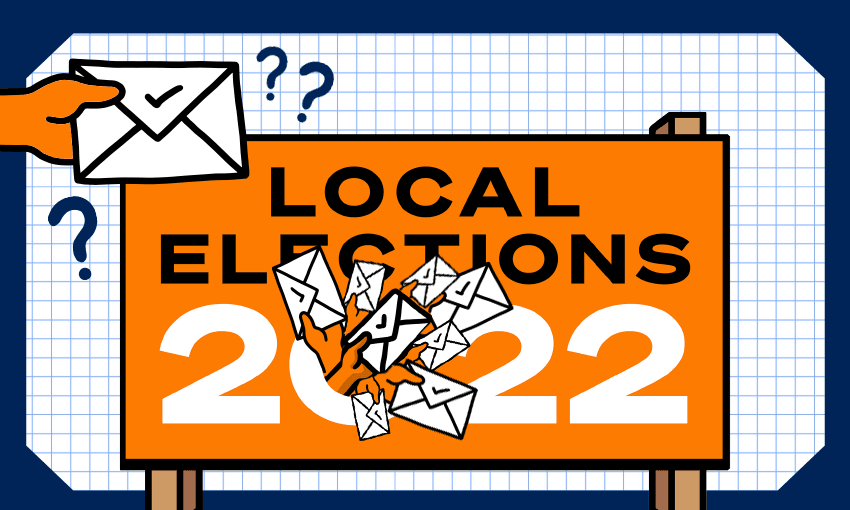There may be no silver bullet, but with voting heading for sub-40%, but there are plenty of ways in which the dismal participation in local body elections can be improved.
Optimism couldn’t be kept down through the local body elections. It felt like more people were more engaged in the contests. They seemed to be paying attention. When low early voter tallies started getting published, it was put down to the Queen’s memorial holiday and, anyway, weren’t there more ballot boxes around town this time?
Probably it was always more hope than expectation. Surveying the numbers across 583 elections yesterday, Local Government NZ had the dismal news: turnout across the country was around 36%, based on progress votes. That would grow, thanks to Saturday and special votes, but it was unlikely to grow enough to hit 40%. It wasn’t anywhere near good enough, said LGNZ, and there was urgent need for a “short, sharp and independent review that should feed into the Future for Local Government Review as well as the review of Parliamentary Electoral Law”.
What then could be done to reverse the trend? To declare there is no silver bullet won’t do, when there are a range of smaller silver filings that might make a difference. Here then a selection, with accompanying expertise from Andy Asquith, an expert on local government in New Zealand, currently based in Australia at Curtin University’s Institute of Public Policy.
Some are smallish, some bigger, and some overlap, but all, reckons Asquith, who co-authored a paper last year on turnout in New Zealand local elections, need exploring in the cause of improving the “absolute shambles” of a turnout sinking beneath 40%.
The means of voting
Postal voting was introduced to lift turnout, but in 2022, with the postal system much less integral a part of lives, it “inherently doesn’t work”, says Asquith, himself a former local election candidate. There were countless complaints of non-arriving voting packs. Among those who didn’t get their forms in the mail was the minister for local government, Nanaia Mahuta. Asquith suggests something closer to the general election approach: a good period of advance voting options, leading up to a polling day with all the hoopla and “big-event buildup”.
Online voting has been raised a number of times over the last fortnight as a way to lift turnout, including by candidates and returning officers at the private companies running local elections. When I put that to Asquith he releases a long, low, gallows guffaw. He agrees with Julienne Molineaux: online voting as a solution is “nonsense”. It’s a bad idea, he says, not just because it overestimates the extent to which people would engage based on the method, but more importantly because of the risk it presents. Simply, “the security is not there yet.”
Asquith has one other argument, which he acknowledges is “really radical” and not easily changed: follow the lead of Australian general elections – and more recently Tasmanian local elections – and make voting compulsory.
The electoral system(s)
As if it weren’t confusing enough already, some elections use FPP, while fewer, though increasing, numbers use STV. Single transferable vote is the fairer system, says Asquith, noting that a combination of low turnout and first past the post means the new Auckland mayor’s declaration of an overwhelming mandate is less compelling given he can’t claim to have the support of more than 15% of eligible voters. FPP, he argues, can be “inherently undemocratic”.
Bring in the Electoral Commission
As it stands, councils are responsible for their own elections, and tend to contract out the task to one of two private companies. Quite apart from the question about “whether people should be making a profit out of running democracy”, it adds further layers of confusion, fragmentation and inconsistency, says Asquith. “Without a doubt” the Electoral Commission should be in charge, he says. “They know what they’re doing.”
A national publicity campaign
“The publicity campaign for 2025 needs to start today,” says Asquith. The Electoral Commission is best placed to run it. After all, “everyone recognises the Orange Guy”, yet he mysteriously exits the scene before the crunch part of local election campaigns.
Asquith wants to see sports stars and musicians encouraging participation. He wants to know why the leaders of all the main political parties aren’t appearing together in advertising urging everyone to have their say.
Party affiliations
Asquith would like to see more candidates stand with a stated party affiliation. It makes things more “transparent and honest”, he says. It’s a useful shorthand for voters, and in many cases a party label can be as or more meaningful in grasping the “social and moral values” of a candidate than their 150-word platitude-ridden booklet blurb. The involvement of parties, with the systems of training and scrutiny they bring, could also lift the quantity and calibre of candidates, he suggests.
Boost competition
It can be a vicious circle. If the options before the electorate are few, the chances of quality are lower, the competence overall is less, the performance is worse, so accordingly is engagement, and that in turn diminishes enthusiasm to run for a seat. When the ratio of people nominated to people elected is 2:1, more must be done to “excite and encourage people to stand”.
Representation ratio
The evidence is clear, says Asquith. The higher the number of constituents per candidate, the less engaged those constituents are likely to be. Auckland, which vastly outnumbers anywhere else, and underperforms everywhere else on turnout, is the “prime example”.
Visibility of incumbents
Councils, mayors especially, can’t wait around for the public to travel to them. “They need to get out of the town hall, to go and see the people.”
He agrees, too, that council meetings need to be made accessible online, and that voting records should be published, too, in the cause of “transparency and relevant information”.
Civics education
Too few of us understand just what local government does, and education is part of fixing that – not just in schools, but “needs to involve everyone in a democracy … there is so much potential there,” says Asquith.
Media coverage
Among a “certain part of the media”, says Asquith, sensationalism and scandal are everything. He applauds the Local Democracy Reporting scheme as a positive step, and something worth supr-charging.
The overarching goal, says Asquith, is of course boosting engagement with local body politics across the board, to avoid the diagnosis of the fictional Jim Hacker in the British comedy Yes, Prime Minister: “Nobody knows who their local councillor is. And the councillors know nobody knows who they are. Or what they do. So they spend four totally unaccountable years on a publicly-subsidised ego trip, handing out ratepayers’ hard-earned money.”
The draft report of the Review into the Future of Local Government is due to go to Nanaia Mahuta within three weeks. Asquith is, frankly, pessimistic. Previous experience would suggest it “comes to nothing” and “gets filed away”, he says, especially given what he assesses as a “disengaged” minister.
Asquith points to Jacinda Ardern’s widely acclaimed commencement speech at Harvard earlier this year. It addressed the power of electoral democracy, but also its fragility. If those words hold true, he says, the state of local democracy and the crisis in engagement will not be left for another day.


